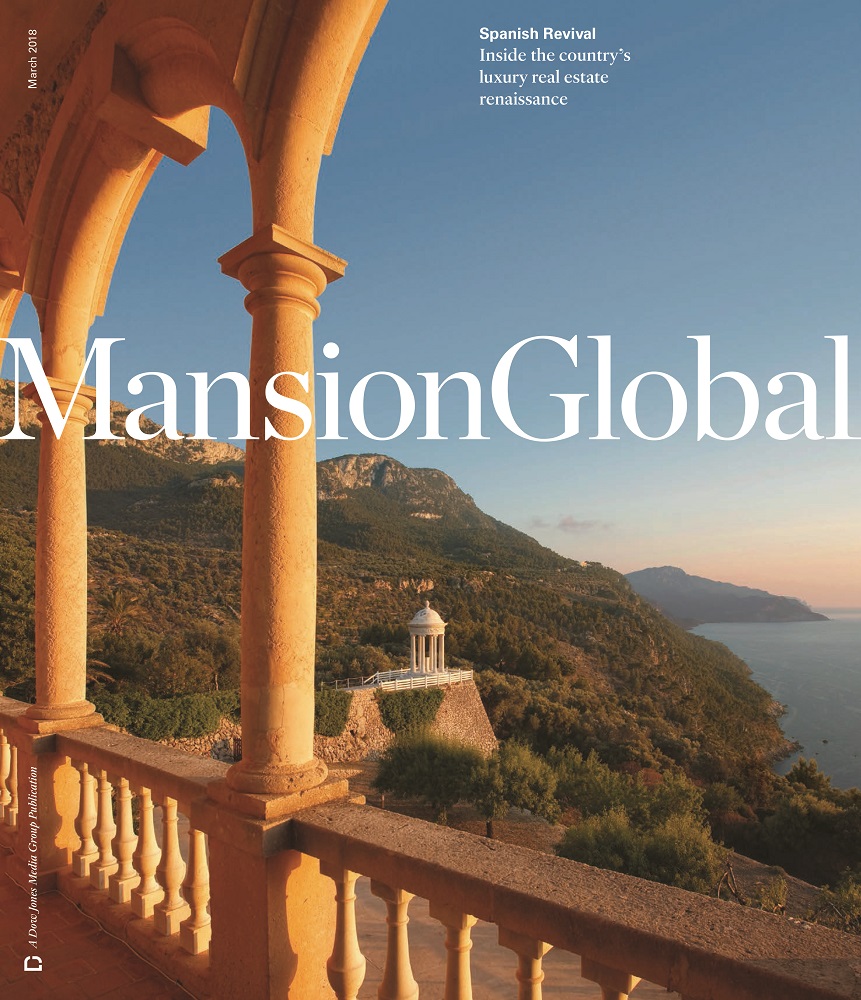This month on The C-Suite, we sat down with Mae Cheng, the head of Dow Jones Media Group’s Luxury Network. Not only is Mae an award-winning reporter and editor, but she was also a key player in the launch of a strong content program at Dow Jones, the development of The WSJ’s events offer for subscribers, and the rebranding of The WSJ’s national politics coverage.
More specifically, however, we wanted to speak with Mae about her role as Publisher and Editor-in-Chief of Mansion Global, a leading news and listings platform for luxury residential properties around the world. Since the once digital-first brand recently went print – with its first glossy issue launched just this month – we felt it was only fitting to ask Mae not only why print now, but also how the world of luxury can teach brands across sectors a thing or two about customer experience.
Brandingmag: Effective luxury branding, especially in the real estate sector, requires clear differentiation, creating desire, as well as adding value. How has the process of branding luxury real estate shifted? Also, please discuss briefly how luxury real estate has driven lifestyle branding to a certain extent in recent years.
 Mae Cheng: Well, many years back, real estate ads consisted largely of just text and listings in the classified sections of your local paper – it wasn’t very attractive. Today, especially for luxury real estate, it’s all about the visuals – the big colorful ads and spreads in magazines. It’s really different now. Today, you’re not just selling the actual property (with the number of bathrooms and bedrooms), but you’re also selling a lifestyle – a luxury lifestyle.
Mae Cheng: Well, many years back, real estate ads consisted largely of just text and listings in the classified sections of your local paper – it wasn’t very attractive. Today, especially for luxury real estate, it’s all about the visuals – the big colorful ads and spreads in magazines. It’s really different now. Today, you’re not just selling the actual property (with the number of bathrooms and bedrooms), but you’re also selling a lifestyle – a luxury lifestyle.
So, I think that it’s evolved quite a bit, which also goes into your other question about how luxury real estate has driven lifestyle branding. Because it’s evolved so much and it’s now also selling a lifestyle, it seems very natural to think that your home is a statement of your lifestyle. People who get a glimpse of your home feel like they’ve gotten to know you just a little bit better; they know what your hobbies are, what’s meaningful to you, what kind of art styles you like, what your favorite colors are. Once they know that, they feel a certain intimacy with you. It’s a very effective way to showcase the best of you, which is essentially your brand, right?
Watching real estate in recent years, it’s really gone beyond the exterior of your home, as I was referring to before. Now, when you’re talking about real estate content, you’re talking about architecture, interior design, even home technology (if it’s a smart home). You’re talking about art and food, and travel even. So, a lot of brands associated with these verticals want to align themselves with real estate these days because it sells that lifestyle. When you see someone in a home – and their home, particularly – you feel that you can live that kind of lifestyle.
Bm: What do you think is most important when it comes to lifestyle branding for brands, in general (not just real estate)?
MC: You have to constantly be at your best if you’re talking about luxury lifestyle branding. You can’t let your guard down, you can’t have a bad or low resolution picture on your ad, you have to constantly be at your best because that’s the expectation (that you’re at the top of the game). Another thing is that you have to keep evolving even if you’ve achieved success. You can’t feel like you’ve reached the pinnacle and everything’s great. Things can get stale pretty quickly – even if you’re talking about a product, you’re constantly thinking how you can enliven it a bit more and make it even more luxurious.
Also, the competition is really fierce for luxury lifestyle branding. There are so many other brands that want to claim your space and they’re constantly looking at what you’re doing, trying to beat you. So, the competition is fierce, you have to stay on top of your game, you have to keep evolving and doing well.
At the same time – and this might sound a little contradictory – you also have to stay true to your brand. If you stray too far from what your DNA is and what’s gotten you where you are, then you dilute yourself too much and it begs the question of what your brand stands for.
 Bm: Global magazine publishing has experienced sharp declines due to a variety of reasons, namely because consumers favor free digital content. What was the impetus to publish a print magazine now, in 2018, when everything is so digitally focused? Do you see any value for brands as it relates to utilizing print vs. digital as a medium for communicating?
Bm: Global magazine publishing has experienced sharp declines due to a variety of reasons, namely because consumers favor free digital content. What was the impetus to publish a print magazine now, in 2018, when everything is so digitally focused? Do you see any value for brands as it relates to utilizing print vs. digital as a medium for communicating?
MC: As you know, Mansion Global started as a digital-first platform launched in 2015 – so we’re over 2 years old. And over the last few years, we’ve worked hard to establish ourselves as a luxury brand that can expand into different products and services. I think our ability to launch this magazine successfully is a testament to the success of the brand and our campaign to reach out to audiences across the world. And it shows how our advertisers are finding it valuable to launch with us on this new platform and reach the audience that we’ve cultivated.
Print, as a vehicle for communicating (especially for a luxury brand message), is still very much alive. Print has a long shelf life and has that unique pass-along opportunity. And when it comes to luxury real estate, it’s still that very visual content that drives the audience to be coming back to you. For me, personally, nothing supports an engaging, immersive, visual experience like a glossy magazine does, with a spread that allows you to feel like you’re a part of it, see all the colors, and feel the beauty.
There’s no denying that digital gives you the possibility of reaching a much larger audience, but (for me) print still feels like a deeper and more intimate experience. With print, you can also better control the distribution, so you can have a more targeted audience.
There’s a place for both print and digital to coexist – they serve slightly different purposes. But for luxury brands and luxury real estate, in particular, a print glossy still speaks to the audience – and the advertisers get that.
And, as a consumer myself, if I see a magazine with images that really grab me, then I find myself flipping through it…and I pass it along to my friends. Even as a consumer, I still feel the draw of print, especially when there’s something so visually-appealing as there oftentimes is when you’re talking about a luxury brand.
Bm: What were some of the challenges experienced and lessons learned in branding a lifestyle news source and luxury commercial product? What advice would you offer for brands marketing to the luxury demographic?
MC: The challenge is that there are so many options for people today. Everybody wants to reach the luxury market whether or not they’re a luxury brand – they want to market like they are a luxury brand. You have to constantly assess what you’re doing to make sure you’re doing it the best that you can. You have to be the most beautiful, the most interesting. You can’t get comfortable in your zone and think that just because you’ve had good sales, you’re doing things right. You have to be constantly challenging yourself, but know when you’ve strayed too far. When you begin launching into areas that are too far from your brand DNA, your audience will get confused about what you stand for.
Especially with luxury brands, there’s a lot of brand loyalty. And when they don’t understand who you are anymore or think you’ve become something else than what they came to you for, they start to stray – and there’s no shortage of other brands that will try to woo them over.
I also think (and one of the challenges for us, especially with digital is) that you really have to connect with your audience and find different ways of doing so. Your audience is coming to you because they want to feel that they’re special, that they’re getting something unique from you that not everyone is getting, an exclusive experience of sorts. Even digitally or with a magazine, you have to find ways to connect. We do so sometimes through our storytelling or experiences that we offer, but the greatest challenge now remains figuring this connection out – because your audience definitely wants to connect with you.
Bm: What do you think makes Mansion Global resonate with your readers so much? How do you differentiate, so to speak?
MC: We offer a lifestyle. On our website, to start with, we have stories that draw you in, but the stories are not just property stories. We talk about history, smart homes, interior design, architecture, travel, the whole gamut. We’re selling you a lifestyle that you want to live.
We also present this in the context of a story by featuring a lot of market reports and discussing how different markets are doing (on a monthly basis even when it comes to major markets around the world). We interview the top people watching these markets and, so, present ourselves as experts in luxury real estate.
The third thing that differentiates us is that we offer a global story: we have just as many stories on Dubai and London as we do on New York and Los Angeles. If you talk to anybody in our newsroom that’s producing stories, they can tell you how the market’s doing both in San Francisco and Sydney, Australia. We present a very global perspective for our audience and I would argue that for our target audience (which comprises of high net worth individuals) they themselves are very global. They want to go somewhere, they want a destination that speaks their language and understands – there are no country boundaries. And we can navigate one market just as easily as we can another.
We’re also always trying to find ways to engage our audience. As I was saying, a magazine has a little bit more targeted and immersive engagement. And then we also have events that we hold around the world to which we invite our audience to attend. So, I think we tick a few boxes, which is what makes us stand out and represents the formula for how we’ve been able to succeed in the last few years.
Bm: As you mentioned, an integral component in marketing to the luxury market is storytelling. In Dubai, branded real estate developments, such as the Palazzo Versace and the Armani Residences, can sell for up to 60% more than their non-branded equivalents. In your opinion, what are the keys to effective storytelling?
MC: It’s definitely the story, but – deeper than that – being able to author it in an authentic and unique voice, being able to appeal to people’s emotions and having them connect with you through the stories. That’s why we take so much care when deciding which stories we’re going to write about each day. Every day, there are endless stories around the world about a new, expensive home going on the market. We choose to write about it only if it comes with a good story that we can tease out, that sets it apart from another home. Whether it be the history of the house or building itself, the architecture or interior designer that put his/her personal brand on it – we find ways to connect our readers to the property. Even if the reader might not be interested in a property like that, we still want to draw him/her in with the story of the property.
Bm: Trademark Question: What’s next for luxury branding? Print vs. digital? Mansion Global?
MC: OK, this is not a cop out, but it’s the same answer for both “What’s next for luxury branding?” and “What’s next for Mansion Global?” And that is that we want to build out our events business. We have a successful events business right now, but what I want to do in the next year is really elevate that events business to an experience for people to engage on a whole different level. When you think about attending an event, you think about sitting in a hotel room with 100 others and listening to 5 people talking on stage. We really want the people who come to our gatherings to feel like they’re living that lifestyle. They’re not sitting in a hotel room in a chair, they’re sitting in someone’s living room and having a cocktail conversation – as if someone opened up their home and had all these people there.
I think that’s the next step for luxury branding, too. Brands want to offer experiences to their customers or clients that truly engages them.
What’s next for print vs. digital? For me, it isn’t a this vs. that for luxury branding. I feel like they could both coexist right now, at the very least. I see at Mansion Global, from one year to another, how our audience continues to increase dramatically and we found this opportunity to do print… I don’t think anyone in our audience would think that since they see us online, they don’t want the magazine – or vice versa. I think they can coexist because they serve different functions.
Also, the content when it comes to luxury branding is so evergreen: you could see something online and still pour through all of the photos in a magazine. For now, it’s just about figuring out a smart way to divide your resources between the two.

